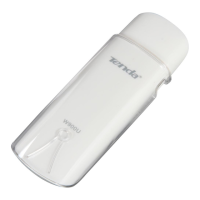802.11i: 802.11i, implemented as WPA2, is an amendment to the original
IEEE 802.11.
802.11j: 802.11j is an amendment to the IEEE 802.11 standard designed
specially for Japanese market.
802.11n: 802.11n is an amendment to the IEEE 802.11 standard, which
improves network throughput over the two previous standards—802.11a
and 802.11g—with a significant increase in the maximum net data rate.
802.11n standardized support for multiple-input multiple-output and frame
aggregation, and security improvements, among other features.
IEEE 802.15: IEEE 802.15 is a working group of the IEEE 802 standards
committee which specifies Wireless Personal Area Network (WPAN)
standards. It includes seven task groups. Task group one is based on
Bluetooth technology.
IEEE 802.16: IEEE 802.16 is a series of Wireless Broadband standards
authored by the Institute of Electrical and Electronics Engineers (IEEE).
Although the 802.16 family of standards is officially called Wireless MAN in
IEEE, it has been commercialized under the name “WiMAX” (from
"Worldwide Interoperability for Microwave Access") by the WiMAX Forum
industry alliance.
802.16a: 802.16a, also known as WiMAX, extends throughput up to
70Mbit/s transmission rate within the distance of 30 miles.
802.20: Delivers 1Mbit/s throughput for wireless MAN (Metropolitan area
network).
IEEE 802.1X: IEEE 802.1X is an IEEE Standard for port-based Network
Access Control (PNAC). It is part of the IEEE 802.1 group of networking
protocols. It provides an authentication mechanism to devices wishing to

